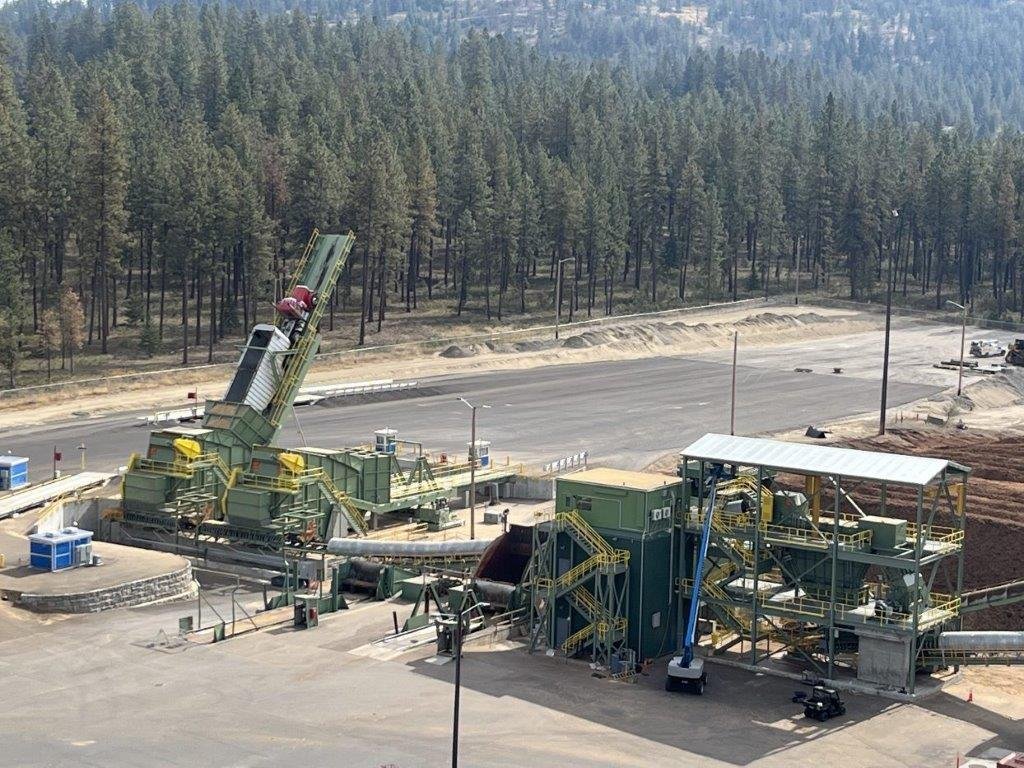I was minding my own business reading email when a document came in from my brother-in-law, Roger, who as I do here, also makes and sells biochar on San Juan Island. It announced that a big company, Myno Carbon, won the 2023 Giuliani Clean Energy Entrepreneur Award and was going to build a carbon removal facility at the Avista Waste-to-Energy Plant in Kettle Falls. So big business was stepping into our gig in a big way. In order to get a grip on the situation, I contacted Myno Carbon and eventually talked to Andy Mercy, Chief Revenue Officer (CRO). It turns out that he also makes wine and is big on biochar. We had a lot in common, except that I make hundreds of pounds of biochar and his company is set to make millions. Roger and I are not nearly out of business yet. Myno will take a couple of years to get set up.
Andy was stepping in for Myno CEO and co-founder Thor Kallestad, (Kallestad’s young daughter, Ella’s first babble when she was learning to talk was “myno,” a sound she used to express happiness, hence the company name) who emphasizes 3 points about the project.
- The first impact is to remove hundreds of metric tons of wood waste from slash piles in the forest where it would release hundreds of thousands of metric tonnes of CO2e emissions each year either through burning or rotting.
- The second result will be to turn that wood waste into renewable energy at the Kettle Falls Generating Station.
- The third major impact is to turn that wood into 40,000 tons of biochar each year where it can enhance soil water retention, increase crop yields, and reduce the need for chemical fertilizers.

| Avista Plant curtesy of mynocarbon.com |
While these are indeed huge benefits, that Myno plans to replicate in other areas where wood waste is available, to my way of thinking, they may understate the potential benefits of biochar. To understand the needs of our depleted soils, we need to look back on the past 2000 years of tillage. Soil scientists are coming to understand the soil not as just a layer of minerals, but as a living biome of plants, fungi, bacteria, insects, worms, and microbial life that feeds and fertilizes itself without chemicals when given the chance. Plowing the soil breaks critical lines of mycelia, a network of fungal threads or hyphae which exchange water, minerals, energy and communication between plants, fungi, and the rest of the underground community. Plowing’s immediate effect is to hasten rotting of roots and organic material releasing nutrients to plants (and carbon into the atmosphere). But the long-term effect is to destroy the living system of symbiotic relationships that sustains fertility. Adding chemicals to replace the lost nutrients begins a vicious cycle that is ineffective in providing the organically derived compounds that plants need while simultaneously polluting the groundwater with chemicals that further inhibit the growth of healthy microorganisms both in the soil and all the way the ocean. The more agrichemicals that are added to the soil to replace lost nutrients, the more nutrient loss and susceptibility to disease occurs. Chemicals used to kill insects, fungus and weeds hasten the evolution of super weeds and other pests. Great for agrichemical companies’ short-term profits, bad for sustaining farms, everyone’s health, the economy, and the ecology.
This agrichemical cycle also eliminates the carbon which would otherwise be sequestered in the soil as living biomass. Biochar can sequester carbon in the soil but its equally beneficial effect is to retain water. Depending on soil type, biochar can increase the moisture retention capacity by 16-38%. The micropores in pure charcoal absorb water and provide a reservoir of microbes living in that water. “Soils have lost 50 to 70 percent of the carbon they once held. This has contributed about a quarter of all the manmade global greenhouse gas emissions that are warming the planet” (Columbia University). I use biochar in my compost not just to store carbon but after charging it with microbes, to inoculate the soil with biology.
Spread over an acre, a ton of soil is paper thin. Although biochar builds up and does not need to be renewed annually, up to 10% of soil volume is often recommended to be biochar. So the need to apply and the market for the addition of biochar will be huge. Current application rates of 2 to 5 tons per acre are anticipated by Myno. Providing the science to convince farmers of the benefit of biochar is one of their goals.
The Avista plant already produces a mixture of 75% charcoal and 25% ash (bash) that can be applied to fields. Before this project, it was returned into the feedstock and burned by the plant. Myno will make 5000 to 7000 tons available to local farmers for field trials. They are working with the Natural Resources Conservation Service to find a mix of farm situations for those trials. Hopefully those trials will quantify increased crop yields but also show increased soil organic matter (SOM), a key indicator of soil fertility. The new facility will remove burnable waste from the woods and return biochar.
As many as 100 semi loads of chips per day are already being consumed at the plant. Every year in the Spring the plant closes for maintenance. We can expect some of the equipment changes to take place this year during that time. Both construction and operation will increase local employment and the local economy. We are on the forefront of something big and I can let go of doing something small.
Thanks to Andy Mercy of Myno Carbon and Gloria Flora of Sustainable Obtainable Solutions for help with this article.

Joe, once again you have led the way!
Permalink